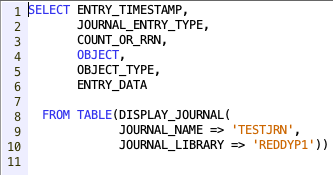What is Artificial Intelligence?
Artificial Intelligence
Artificial Intelligence (In short, AI) is a highly sought-after skill in the Tech Industry today. In this post, let's try to understand "What is Artificial Intelligence?".
Before we dive in, let's first understand "What is Intelligence?" As humans, we think and act. This involves understanding our environment, predicting outcomes, and behaving accordingly.
Similarly, AI focuses on building machines that can understand, predict, and act/respond effectively and safely. AI isn't exclusive to any specific industry. Its applications spread across different industries, including playing chess, proving mathematical theorems, driving cars, writing poetry, composing music, generating videos, diagnosing diseases, and much more. The field is continually evolving.
Initially, AI was often defined in relation to matching 'Human performance'. However, AI has surpassed human capabilities in several areas and lagging in some areas. Some researchers proposed that intelligence is more accurately defined by rationality. What does it mean to be rational? It could be a mix of reasoning and thought process. We could also say being rational is doing the right thing. In AI, rationality often involves making decisions that are logical and goal-oriented using available information.
To better understand AI, we can compare it with human behavior. Humans think and act which can be broadly be broken into the following.
- Thinking Humanly
- Acting Humanly
- Thinking Rationally
- Acting Rationally
Let's explore each of these combinations.
Thinking Humanly
To understand AI, we must first understand how humans think. We can learn about this in a few ways:
- Introspection - observing our own thoughts.
- Psychological Experiments - observing how people act.
- Brain imaging - observing brain activity.
Understanding how humans think allows us to develop computer programs that emulate human thought.
The same principles can be applied to machines.
- Introspection: Analyzing internal processes, like pathways in neural networks.
- Psychological Experiments: Testing machine responses against human behavior, such as in chatbot testing.
- Brain Imaging: Using artificial neural networks to mimic brain structure.
We could say that if a machine produces similar responses as human, it is thinking like a human. However, it is important to note that AI systems are still far from perfectly replicating human thought.
Acting Humanly
The question of whether machines can think has led to exploration on how machines can act like humans. To test this, Alan Turing proposed the Turing Test in 1950.
The Turing Test checks if a machine can exhibit behavior indistinguishable from a human by engaging in a text-based conversation. If a human evaluator cannot reliably differentiate the machine from another human, then it is said that the machine has passed the Turing Test.
For a machine to act like a human and pass this test, it requires:
- Natural Language Processing (NLP): To comprehend and generate human language, which is essential for meaningful conversation.
- Knowledge Representation: To store and retrieve information.
- Automated Reasoning: To draw conclusions based on available information.
- Machine Learning: To adapt and learn through interactions.
Acting humanly requires not just mimicking words but understanding context, reasoning through problems, and learning from feedback.
Thinking Rationally
Thinking rationally involves logic to solve problems. In AI, it means systems emulate how humans reason using available information.
Historically, rational thinking has been studied through logic and probability.
- Logic: Deriving conclusions using rules. E.g. If "All humans are mortal," and "Socrates is human" it can be concluded that "Socrates is mortal"
- Probability: Handling uncertainty by quantifying the likelihood of events, like predicting rain based on historical data.
AI needs to go beyond basic rules and handle real-world complexity. This involves:
- Inference: Drawing new conclusions from existing knowledge. E.g. Recommendation systems.
- Decision-Making: Choosing optimal actions based on probabilities. E.g. Self driving cars.
Rationality means making the best possible decision using given constraints. Machines designed to think rationally weigh evidence, assess risks, and reach conclusions effectively.
Thinking rationally in AI combines logic for precision and probability for handling uncertainty, creating systems that navigate real-world complexities.
Acting Rationally
Acting rationally means taking actions that achieve the best possible outcome. This involves the concept of an agent.
An agent understands the environment and acts through sensors and actuators. A rational agent consistently chooses actions to maximize its performance, using its knowledge and goals.
The standard model of rationality says that a rational agent will:
- Have a clear objective.
- Use available information to make decisions.
- Consider all actions and their outcomes.
- Select actions for the best expected result.
In practice, agents have limited rationality due to constraints like limited computational power, knowledge or time. They strive for "good enough" decisions within these limitations.
E.g.:
- A chess AI using heuristics to find best moves due to time constraints.
- A delivery robot prioritizing safety over speed, even if it means longer routes.
Rationality balances the ideal of "doing the right thing" with real-world limitations. AI systems are designed to make informed decisions that adapt to goals, environment, and limitations.
Beneficial Machines
The goal is to create beneficial machines, AI systems that align with human values, for example:
- Self-driving cars that avoid accidents.
- Healthcare AI that recommends optimal treatments.
Defining "beneficial" is complex. Researchers align AI decisions with ethical principles for safety, fairness, and accountability.
Conclusion
Acting rationally is key to designing intelligent systems. By balancing the ideal with practical limitations, AI is moving towards becoming more reliable and beneficial. As we explore AI, we must consider how to ensure these machines align with human goals.
Call to Action
What do you think about the role of rationality in AI? Is it the key to smarter machines? Share your thoughts in the comments!
This blog post draws insights from the book Artificial Intelligence: A Modern Approach by Stuart Russell and Peter Norvig. Widely regarded as a foundational resource, it has been instrumental in shaping the understanding of AI concepts and their applications.



Comments
Post a Comment